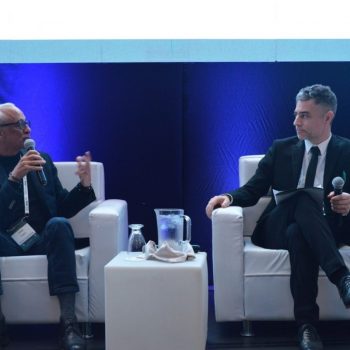With a large group of representatives of pay TV, open TV, digital platforms (OTT’s) and technology companies, took place in Bogotá on June 7 NextvSeries Colombia 2018, an event organized annually by the multinational Dataxis.
The main theme was the “Boom” of the OTT’s, a new member of the industry that came to stay and transform the business and the way of watching TV. While digital platforms will not end with pay TV, as many of the panelists said, others with an apocalyptic air see them as the great threat of the industry, the truth is that they are slowing down their growth. According to Dataxis’ projections, pay TV in Latin America will reach 79.3 million homes by 2023, although it is expected to have 8.5 million new customers compared to 2017, subscriptions will not exceed 40% of the total. households with television.
The growth opportunities of pay TV in Colombia was the first of the panels developed during the event. The outlook does not seem encouraging if the service continues to be provided to subscribers in the traditional way. In this regard Gabriel Ferrer, General Manager of Codisert commented: “The only way to grow is to be creative, to reinvent ourselves”. For his part, Henry Reyes, President of HV Televisión, stated that it is a fact that pay TV has decreased in Colombia and it will not be possible to sustain business in the traditional way. Sergio Restrepo, CEO of Cable Mío went further: “The content providers of the cable TV are afraid of the new way of watching TV, which is with mobility, therefore, we must look for the way in which our service does not stay in the client’s house but goes with him, which is what digital platforms have achieved, see content at any time and from any place connected to the Internet.”
For his part, Fernando Graziano, Regional Sales of SeaChange concluded this topic saying: “We must enrich the consumer experience, not only seeing what you want at the time you want, but that your experience is pleasant. There is a lot to be done by the cable operators, when we offer a good technological platform and a good quality local content, the subscribers stay.”
How will TV operators deal with the OTT’s? The choices of the cable companies seem to be clear. For Henry Reyes we have to look for closeness with all audiences, offer good broadband with online games, for example, as well as be a good content producer, we will not be within the reach of Netflix Productions, but I think we can be in ability to produce local contents and integrate other interesting products for the subscriber as a club of benefits and good connectivity. Fernando Graziano comments that the best option is to join the OTT. “I prefer that people see Netflix through my system than outside it. And he adds that it is necessary to raise subscriber awareness with their own content and the possibility of navigate our network. It is no longer the number of channels that interests people, but quality. ”
Netflix, the pretty girl of the Party. No doubt Netflix, the digital platform with the most subscribers in the world, has become a threat to all players in the industry. The OTT’s scenario tends to become more complex, since there are more than 150 platforms operating in Latam, but Netflix dominates the market. Do OTT’s help promote or destroy national content? It was another of the topics discussed during the meeting, with as panelists Rodrigo Holguín, director of RTVC Play, Catalina Porto, executive manager of Caracol Televisión’s production company, Yenny Chaverra, coordinator of the Retina Latina platform. More than answering this question in particular, the panelists defended the importance of open TV, its credibility and the quality of Latin productions worldwide that turn out to be very desirable, especially film and novels. All agreed that the OTT’s, especially Netflix, have displaced the local content, but also ensure that they have become an ally of buying and selling content.


